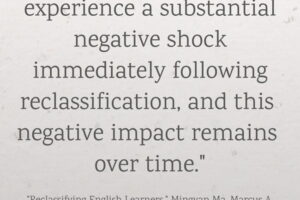
How Support From Parents Relates to Students’ Basic Needs
A majority of college students report lacking sufficient food or access to stable housing while enrolled, and a new study shows a connection between generational wealth and a student’s level of basic needs insecurity.
Research from the Institute on Higher Education Policy finds the likelihood that students receive support from their families varies significantly by race and ethnicity, and these gaps in financial support are tied to basic needs insecurity while enrolled.
The analysis points to a need for increased affordability in college, according to report authors, particularly for learners from low-income backgrounds, including protecting the federal Pell Grant program and ensuring financial aid covers nontuition expenses.
The background: Financial insecurity is one of the top reasons why a student stops out of college, and it can also impact expected economic return on investment for learners. Basic needs insecurity, similarly, can threaten student retention.
There’s a cyclical relationship between higher education and wealth, according to the report. Students from high-income backgrounds are more likely to graduate, providing them with greater access to high-paying jobs and other opportunities, which in turn allows them to cover their own children’s college tuition, creating similar opportunities for them. A recent poll from Gallup and Lumina found 40 percent of parents want their child to attend a four-year college.
This intergenerational wealth transfer can result in inequities in student success in higher education, because some learners receive zero or little financial support from their families while enrolled.
IHEP’s report analyzes data from the 2020 National Postsecondary Student Aid Study to evaluate familial financial support to undergraduate students at four-year institutions and how this influenced food and housing security for learners.
Family income and support: The report showed over half of some student groups—American Indian or Alaska Native (AI/AN), Black, and Native Hawaiian or Pacific Islander (NH/PI)—indicated they received no support from their families paying for college.
Asian American students attending four-year institutions were most likely to report financial contributions from their parents, with one-third of respondents indicating they received over $10,000. Just under one-quarter of white students, similarly, received over $10,000 from their parents.
Sallie Mae’s “How America Pays for College” report, published this month, found the average American family spent $30,837 on higher education last academic year, up 9 percent from the prior year. Respondents indicated parents’ income and savings will help pay at least 38 percent of these costs, or $11,729.
Unsurprisingly, students who reported receiving parental financial support were more likely to come from high-income families, but family income was not entirely indicative of the level of support for students. White students in the “very high support” range reported family incomes of $218,000, but American Indian and Alaska Native students who received very high support came from families earning approximately $125,000. Researchers noted white students from families earning about $50,000 were more likely to say their family did not contribute to their college costs, compared to their Black and Hispanic peers who came from similar family backgrounds but did receive funds from their parents.
“These patterns highlight differences in ability and willingness to contribute, and may relate to how families prioritize and finance that support through savings, Parent PLUS loans, or other means,” according to the report.
Sallie Mae’s survey found 87 percent of families earning $150,000 or more contributed to their students’ education, averaging $21,922 per child. In comparison, only 64 percent of households making less than $50,000 contributed, but the average was $12,214 per child.
Basic needs: Data showed food insecurity was most common among AI/AN, Black and NH/PI students, regardless of the level of parental support received. “Even among students who receive some financial support, more than 40 percent still report some level of food insecurity,” according to the report.
For some groups, higher parental support does correlate with less food insecurity. Among white and Asian American students, there was a 20-percentage-point difference in reported food insecurity between students receiving very high support and their peers who didn’t get funds from their parents. This gap was less significant among other groups, and even those receiving significant support still indicated food insecurity. Over one-third of Black students with parental support of $25,000 or more said they were at least moderately food insecure.
Researchers noted that figures for some student populations, particularly American Indian/Alaska Native and Native Hawaiian/Pacific Islander students who receive parental support, are smaller sample sizes, making it difficult to draw an evidence-based conclusion on trends.
Across races and ethnicities, one in 10 students with no parental support experienced homelessness in the past 30 days. The level of parental support, similar to food insecurity, made a significant dent in the number of white and Asian students who were homeless, but for some groups, parental support was not an indicator of housing security.
“These gaps in food and housing security—even among some students with strong parental support—reflect systemic inequities that go beyond family contributions,” researchers wrote. “Students should not have to depend on intergenerational wealth transfers to avoid hunger and homelessness and succeed in higher education.”
The analysis points to a need for efforts to disrupt wealth inequality and how it impacts student retention and completion, according to the report’s authors.
How does your college or university support students’ basic needs security? Tell us more about it.
Source link



